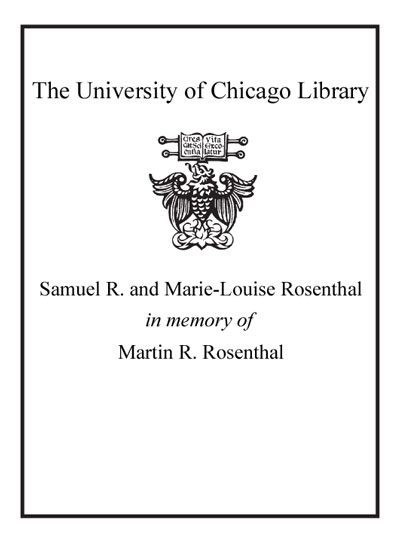The Oxford handbook of wetland archaeology /
Saved in:
| Edition: | 1st ed. |
|---|---|
| Imprint: | Oxford : Oxford University Press, 2013. |
| Description: | xxiv, 943 p. : ill., map ; 26 cm. |
| Language: | English |
| Series: | [Oxford handbooks] Oxford handbooks. |
| Subject: | |
| Format: | Print Book |
| URL for this record: | http://pi.lib.uchicago.edu/1001/cat/bib/8967332 |
Table of Contents:
- Acknowledgements
- List of Figures
- List of Tables
- List of Contributors
- 1. General introduction to the Handbook
- Part 1. Wetland occupations: a geographical and chronological perspective
- Introduction
- Europe
- 2. Wetland occupations in prehistoric Europe
- 3. Europe s wetlands from the Migration Period to the Middle Ages: settlement, exploitation and transformation, AD 400-1500The Americas
- 4. Occupations of past wetland environments in the United States
- 5. People-wetland interaction in Canada
- 6. Pre-Columbian people and the wetlands in Central and South America Africa and Asia
- 7. People and wetlands in Africa
- 8. Wetland Archaeology and the role of marshes in the ancient Middle East
- 9. The past Eastern Russian wetlands: review of the prehistoric occupation, chronology, economy, and environment
- 10. Prehistoric wetland occupations in the Lower regions of Yangtze River, China
- 11. Wetland sites in Japan Oceania
- 12. Wetland occupations in New Zealand
- 13. Australian wetland occupations before and after the Europeans
- 14. Wetland archaeology in the Highlands of New Guinea
- Part 2. Waterlogged archaeological evidence
- Introduction
- Settlements and habitations
- 15. The Alpine region lake-dwellings
- 16. Irish and Scottish crannogs
- 17. Houses, households and settlements: architecture and living space Material culture
- 18. Portable wooden objects from wetlands
- 19. Fishing traps and weirs on the Northwest Coast of North America: new approaches and new insights
- 20. Bone and antler artefacts in wetland sites Road networks and transport
- 21. Trackways and roads across the wetlands
- 22. Rivers and lakes: a network of wetland highways Human bodies
- 23. Bog bodies: underwater burials, sacrifices and executions
- Part 3. Survey and excavation
- Introduction
- Survey
- 24. Detecting organic materials in waterlogged sediments
- 25. Underwater survey and acoustic detection and characterisation of archaeological materials
- 36. Archaeological strategies for terrestrial wetland landscapes Excavation
- 27. Intertidal survey and excavation
- 28. Excavation of wet sites
- Part 4. Multidisciplinary scientific network
- Introduction
- 29. Archaebotany: the potential of analyses of plant remains from waterlogged archaeological sites
- 30. Insect analysis in wetland archaeology
- 31. Palaeoecological reconstructions
- 32. Geoarchaeological and soil micromorphological studies in wetland archaeology
- 33. Ancient DNA research on wetland archaeological evidence
- 34. Palaeoclimatology and archaeology in the wetlands Dating methods
- 35. Radiocarbon dating of wetland sites
- 36. Dendrochronology in wetland archaeology
- 37. Lacustrine varve counting as a dating technique: advantages and disadvantages
- Part 5. A vulnerable cultural heritage: preservation and conservation
- Introduction
- Preservation
- 38. Preservation against erosion: protecting lake shores and coastal environments Artefact conservation
- 39. A review of current post-excavation treatment methods for waterlogged organic archaeological materials: the last 20 years Political actions
- 40. National and international wetland management policies
- 41. Wet Site Archaeology on the Northwest Coast of North America and the Native Communities involvement in Managing their Wetland Heritage Sites
- Part 6. Changing research attitude: towards one archaeology
- Introduction
- 42. Wetland Archaeology in the twenty-first century: adapting to climate change
- 43. Life history approaches and wetland habitation: a later prehistoric case study from the Dutch delta
- 44. Rhythm of wetland life: seasonality and sociality
- 45. Towards an Anthropology of Wetland Archaeology: Hunter-Gatherers and Wetlands in Theory and Practice
- 46. Long-distance trade routes linked to wetland settlements
- 47. Integrating dry lands and wetlands in late prehistoric farming regimes
- 48. People, lakes and forest in the Baltic region: a prehistoric perspective
- Part 7. Wetland archaeology and the public
- Introduction
- 49. Wetland archaeology in the media and the popular literature: beyond the scholarly taboos of the twentieth century, back to the pioneers
- 50. Informing the public: bridging the gap between experts and enthusiasts
- 51. Museum exhibitions, open-air museums and hands-on archaeology
- 52. The lake-dwelling diaspora: museums, private collectors and the evolution of ethics in archaeology
- Epilogue: Reflections and future perspectives
- Introduction
- 53. The archaeology of wetlands: a personal journey
- 54. Concluding remarks and future perspectives
- Index

